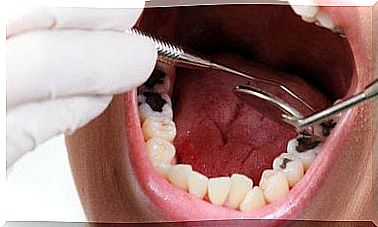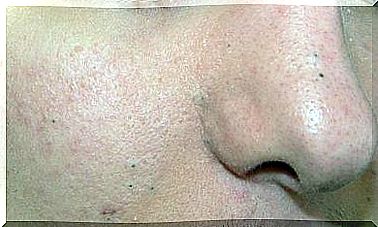Respiratory Disorders In Newborns
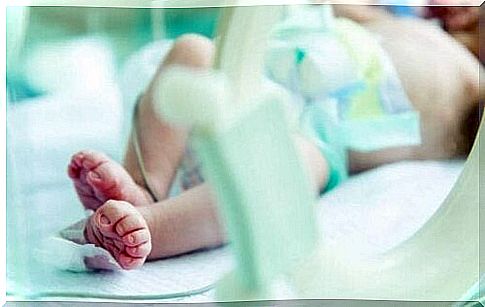
Babies are particularly vulnerable to certain diseases. This is why early detection allows for effective diagnosis and treatment to control problems such as respiratory disease in newborns.
According to the Newborn Respiratory Disorders study , breathing problems are quite common in babies. This fact may seem surprising, but it actually isn’t. Most newborns develop respiratory disease, but its severity varies.
Respiratory diseases in newborns require prompt treatment because they can be life-threatening. Today you will discover some of the most common conditions in babies and how they can be treated.
Respiratory Diseases in Newborns
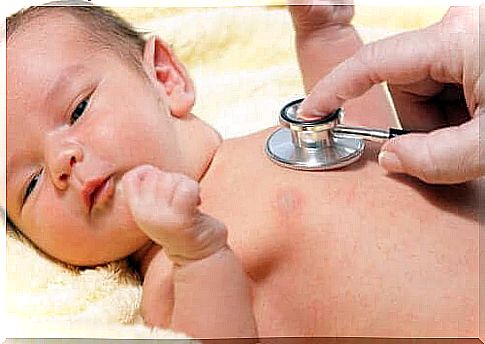
Respiratory diseases in newborns are also referred to as neonatal respiratory diseases. Some may be due to infectious causes or birth defects.
To discuss some of the most common respiratory diseases in newborns, let’s focus first on the study conducted by Dr. Cesar Alberto Orozco.
Interstitial Lung Disease
This first of the respiratory diseases in newborns can affect all or only part of the lung. The problem is that it causes an irreversible disruption of the alveolar septum, causing air to build up in the chest.
- This happens spontaneously, usually in newborns who are on a ventilator.
- Sometimes it manifests itself in babies who weigh much less than the recommended weight.
The most commonly used treatment is to lay the newborn on its side (the one with the affected lung) to compress it and promote healing. Also, doctors may insert one endotracheal tube into the sound lung so that the other can heal.
Pneumothorax
A pneumothorax is usually more common in premature babies. The problem is that the air gets trapped in the peribronchial spaces, compressing the airways.
That trapped air usually escapes into the areas between the lung and chest walls, which is known as pleural space. When this happens, the newborn’s skin usually looks bluish; this is known as cyanosis.
Experts consider this disease an emergency, because the chances of the newborn dying if not acted quickly are quite high. The solution is usually to insert a catheter into the baby’s chest to drain the air that has escaped into the pleural space.
Transient tachypnea
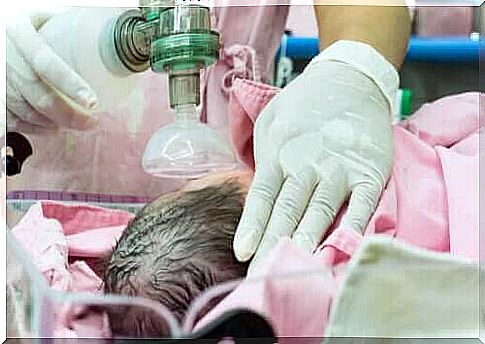
The third of respiratory diseases in newborns last less than 24 hours. As in the previous case, the baby’s skin may turn blue. This is due to the fluid that is still in the lungs. If the newborn does not expel lung fluid, it can then lead to complications.
Although the baby removes a lot of this fluid while breathing, premature babies and babies born by Caesarean section sometimes have a hard time breathing it out.
The usual treatment is constant monitoring and, if necessary, the newborn is supplied with extra oxygen. Very rapid breathing is a characteristic symptom of this disease. During treatment, the baby will usually receive fluids and nutrients intravenously because he or she does not have enough air to drink.
Other Respiratory Diseases in Newborns
We have discussed three very different respiratory conditions in newborns. below we will summarize a few other diseases that can affect newborns.
- Congenital tracheomalacia. In this case, the trachea does not develop properly during pregnancy, which means that it is weak and flaccid. Babies with this condition often make a lot of noise when breathing. This problem usually improves on its own within 18 months.
- Congenital bronchiectasis. In this case, the airways widen due to infection or inhalation of foreign particles. In general, this condition often leads to complications. The goal of treatment is to fight infections, which usually return. In most cases, the damage caused by this is irreversible.
- Pulmonary hypoplasia. This alters lung development and inhibits the branching of both the airways and arteries. This causes respiratory distress in the newborn, which in some cases leads to death. However, it is a fairly rare disease.
- Pneumonia. In this case, the lung tissue becomes inflamed, which can severely hinder oxygen absorption. As a result, the death rate is high in babies who are not (adequately) treated. However, early treatment with antibiotics can usually treat this infection effectively.
These were some of the most common respiratory diseases in newborns. Early diagnosis is key to helping doctors treat these problems. To do this, the medical team will request the necessary tests to determine the best treatment for the baby.






